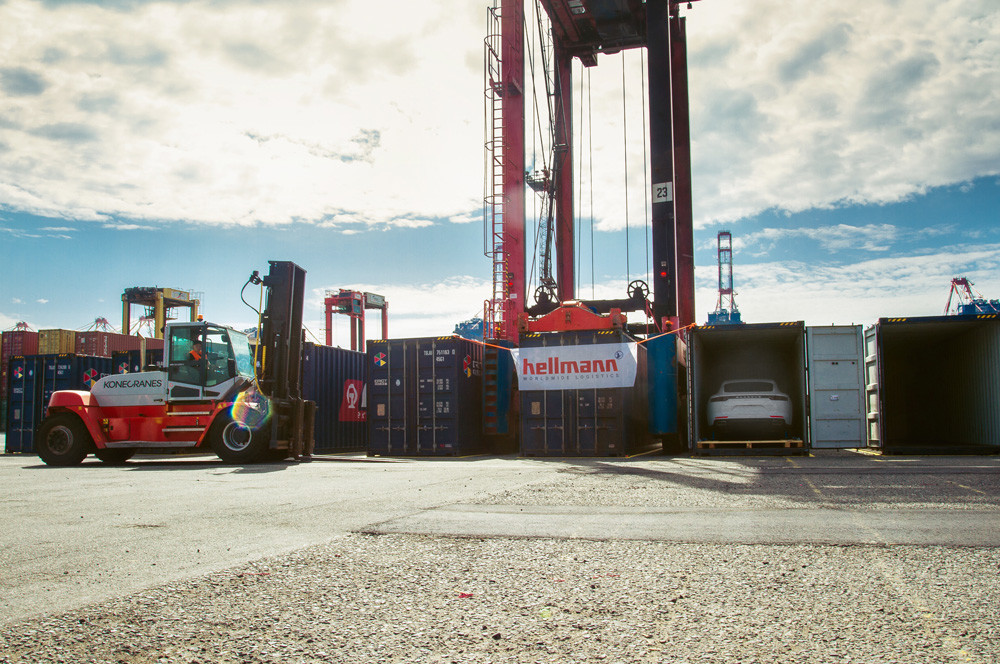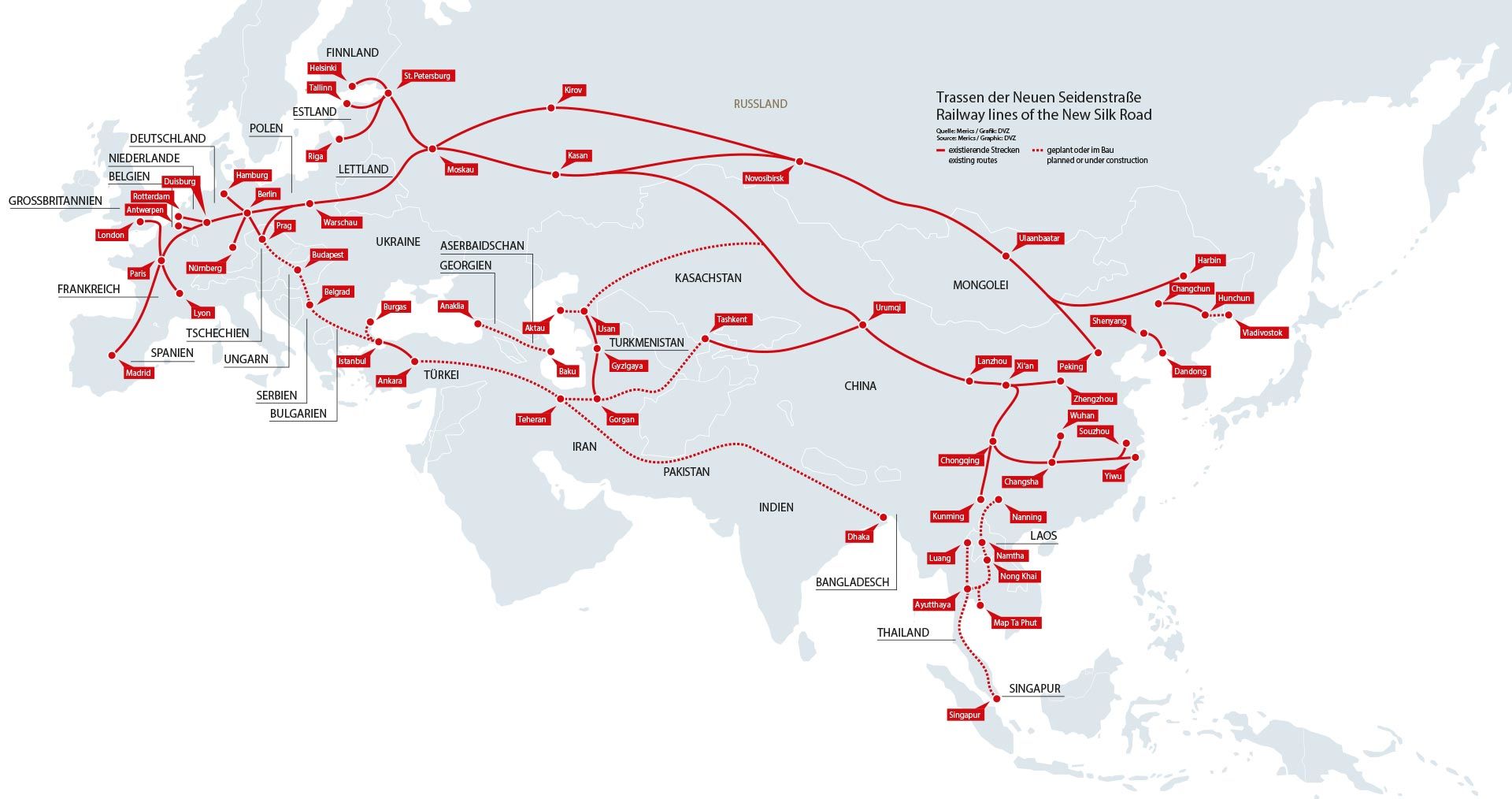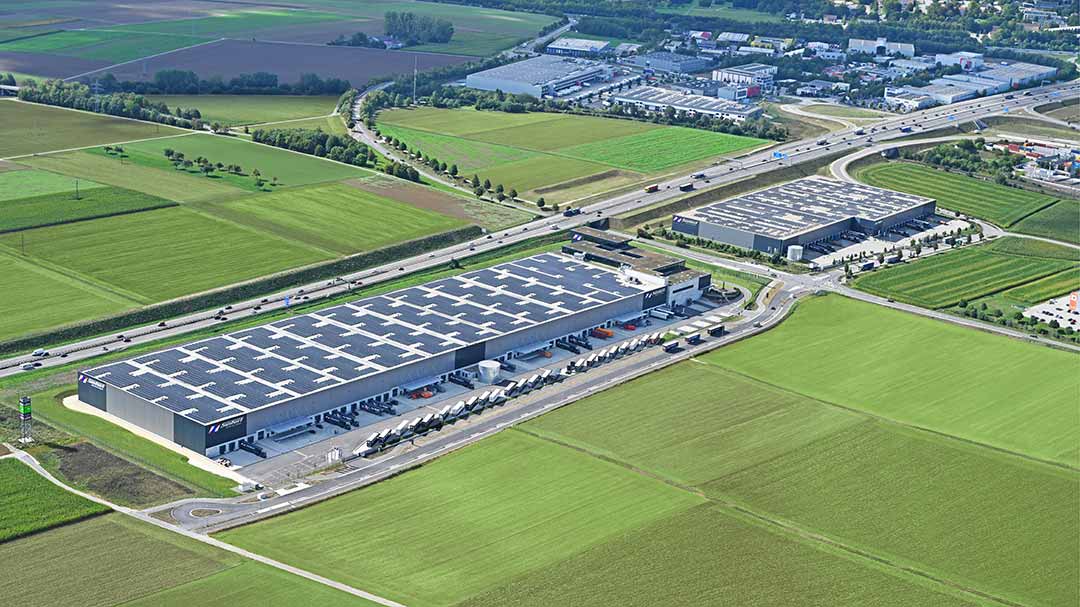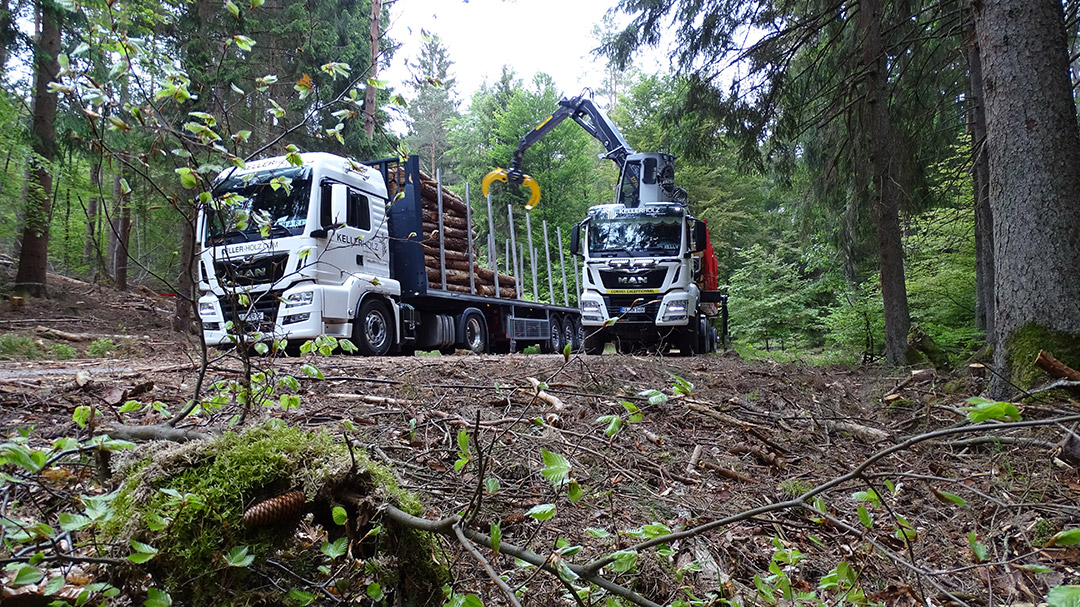Reading time approx. 7 minutes
Text: Oliver Schönfeld
Photos: Christian Greiten, Oliver Schönfeld, Hochschule Osnabrück, Hellmann, Porsche
The new Silk Road is bringing the idea of ancient trade routes into the modern age – the gargantuan infrastructure project is set to fundamentally change logistics in Asia. But what realistic potential does the megaproject actually offer? Hellmann Worldwide Logistics has used the rail link for several years, including for Porsche. An intercultural project at Osnabrück University of Applied Sciences is looking at what the Silk Road means for the neighbouring countries and the people who live there, with students following the trading route over land from Hamburg to Shanghai.
8,000 Porsche vehicles transported by rail to China each year
It is expected that some 8,000 sports cars will travel along the railway to China each year. This corresponds to around a tenth of Porsche sales there. Hellmann Worldwide Logistics from Osnabrück was given the job of handling the logistics. The company has more than six years of experience in looking after rail transport for various customers on the new Silk Road and is therefore at the forefront when it comes to using this historic route. ‘In terms of tonnage, we transported the equivalent of Cologne Cathedral on the rail link last year alone,’ reports Matthias Magnor, Chief Operating Officer Road & Rail at Hellmann. ‘It’s worth mentioning that we have not lost a single container since then – a clear indication of the quality of this transport route.’ Transport by sea cannot always offer this degree of reliability and safety.
»The fact that Porsche has consciously chosen the Silk Road sends positive signals both to the automotive world and to other sectors, too.«
Matthias Magnor, Chief Operating Officer Road & Rail at Hellmann Worldwide Logistics
Positioned as a first mover
The Porsche contract also got off to a smooth start, and the fast delivery is quickly resulting in more demand. Other dealerships in various Chinese provinces now also want to use the railway. ‘The speedier delivery represents real added value that dealerships can offer their customers,’ says Magnor. ‘The brand is thus positioning itself as a first mover in the very competitive luxury segment with a logistics quality to match, which other manufacturers cannot offer yet.’ And he expects this Asian logistics project to have a great impact beyond the automotive sector, too. ‘The fact that Porsche has consciously chosen the Silk Road sends positive signals to both the automotive world and to other sectors, too.’
Hellmann is working closely with the logistics group EUROGATE to transport new German-made vehicles to China. At their container terminal in Bremerhaven, two vehicles per transport unit are put into containers and loaded onto goods trains. A solar-powered GPS tracking tool developed by Hellmann called Smart Visibility is attached to the containers to enable data transfer for end-to-end tracking and tracing of the valuable rail freight. Each week, two full trains make their way along the 11,000-kilometre route. ‘EUROGATE is doing outstanding work here and is an important partner for us,’ emphasises Magnor. The container units head for a hub in Chongqing, which opened at the start of 2019. There, the vehicles are prepared for certification by the Chinese authorities before being distributed to the dealerships.
Appealing to many sectors
The time saving and the safety of transport on the railway benefit high-tech sectors in particular, where the containers’ loads often have a particularly high value. ‘Faster transport routes have an enormous effect here as they minimise the amount of capital that is tied up,’ explains Matthias Magnor. This route is also of interest to the consumer sector, such as consumer electronics with short product life cycles or the fashion industry with its rapidly changing collections. ‘In the automotive segment, the Silk Road is not just attractive for OEMs, but also for the entire supplier industry,’ says Magnor. ‘The railway is an alternative for heavy loads that cannot be transported by air, for instance, or for components that need to be delivered within tight time frames.’ He also sees further potential in Asian logistics for plant engineering, machinery and spare parts transport.
Hellmann wants to expand the project with Porsche and attract further customers. ‘The idea of the Silk Road is well beyond its infancy now. You can see it establishing itself as a reliable and important third pillar of intercontinental transport,’ explains Magnor, convinced. He says that the diversity of languages along the route means that administration and formalities in the countries through which the route passes do entail a certain amount of work, but there are hardly any bureaucratic barriers left to overcome – everything is apparently running smoothly. As the rail networks use two different track widths, there are two essential stops along the way, but these take up barely any time considering the total distance.
Europe and China benefit equally
To take its pioneering role even further, Hellmann agreed in early June 2019 to work closely with the United Transport and Logistics Company – Eurasian Rail Alliance (UTLC ERA). UTLC ERA is a logistics joint venture, with equal shares held by the state railways of Kazakhstan, Belarus and Russia. It was also involved at an early stage in implementing the transport concept for the finished Porsche vehicles. The cooperation is intended to drive the development of effective container transport between Europe and China and provide a lasting boost for capacities in rail freight traffic in the coming years. Matthias Magnor believes that everything is ready to get going on the railway: ‘I don’t see any capacity bottlenecks on the Silk Road in the short or medium term. Quite the opposite – capacity will continue to grow in line with the demand for this transport route. Europe and China will benefit from this equally. Likewise, the new Silk Road is also having positive effects on all regions on both sides of the route.’
»If German and European companies do not get to grips with the opportunities of the Silk Road, sooner or later we will be left behind.«
Professor Michael Schüller, Osnabrück University of Applied Sciences, Faculty of Business Management and Social Sciences, Management/Supply Chain Management
Missed opportunities
The prospects for the logistics sector are highly promising, but how do residents in the Silk Road’s neighbouring countries see the development? Do they even know about it? And how is the role of the Chinese economic policy viewed? These are the questions that an intercultural project by Hefei University in the Chinese province of Anhui and Osnabrück University of Applied Sciences set about trying to answer in spring 2019. ‘Many German companies have not yet even begun to recognise the possibilities associated with the Silk Road. They are recklessly missing out on many opportunities,’ says Professor Michael Schüller from the Faculty of Business Management and Social Sciences, Management/Supply Chain Management at Osnabrück University of Applied Sciences. He reports that this is quite different in China itself, and also in Kazakhstan, for example: ‘We wanted to thoroughly investigate these different ways of looking at the Silk Road during the project.’ Schüller came up with the idea for the research project and accompanied the students on location.
Hefei is Osnabrück’s Chinese twin city. There is already a close link between the two universities through the ‘International Logistics Management China’ degree programme. For their project, the students worked together in mixed teams, with one group starting in Hamburg and the other in Shanghai. They met in Almaty in Kazakhstan to evaluate their experiences from the journey and their research with a third group at the Kazakh-German University. Along the route from Hamburg to Hefei, the students visited numerous goods hubs and trading metropolises in China, Kazakhstan, Russia, Poland and Germany.
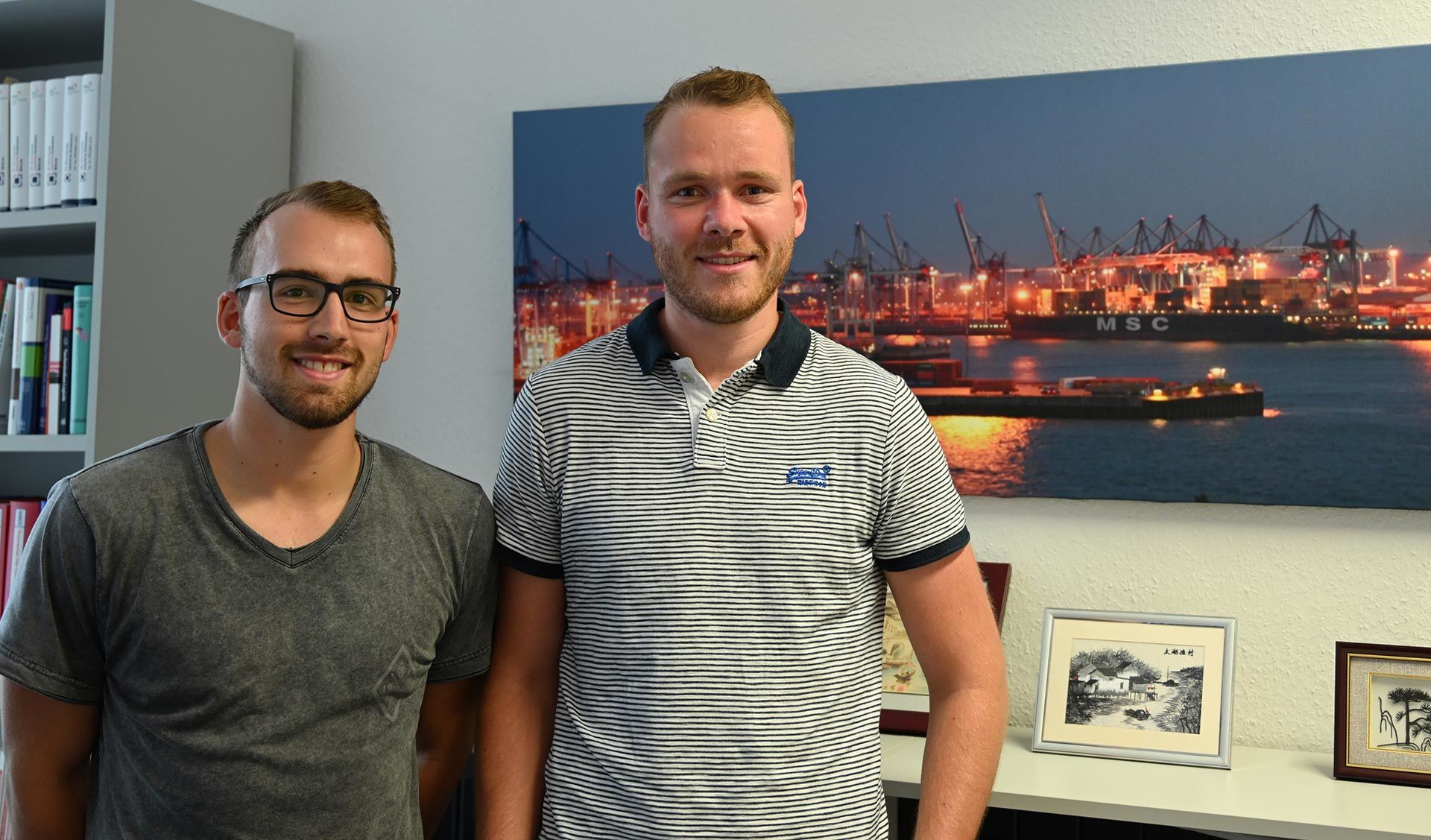
Surprising impressions and insights
The journey between west and east took them far from the usual tourist routes and gave them many surprising impressions and insights. ‘Practically none of my friends know what lies behind China’s Silk Road project. The topic is generally somewhat neglected here,’ reports Philipp Röttges, who is in his fifth semester of studying International Business Management with a focus on logistics and was part of the Hamburg–Almaty group. The students also noticed a similar situation in Russia. ‘Our impressions in Kazakhstan were totally different, however. Literally everyone knows about the Silk Road there, and their expectations are high, in particular with regard to economic opportunities. But there are also fears about China having too dominant a role,’ says Röttges.
‘The Silk Road project is also ever-present in China,’ adds Christian Greiten. He is in his sixth semester of Business Administration and Management and was in the Shanghai–Almaty group. ‘Sometimes it seemed like all the students could recite the state propaganda about the Silk Road by heart.’ Neither student can hide the fact that there were critical nuances and experiences. For instance, they heard several times in Kazakhstan that the people there feared losing their own culture due to Chinese dominance. The hours of passport checks at the border between China and Kazakhstan, for example, are worth mentioning. Similarly concerning were the official Chinese ‘minders’ who didn’t want to take their eyes off the students, even when they were wandering around town or enjoying an evening meal.
‘The impressions from the project confirm the different perspectives with regard to the Silk Road,’ says Professor Schüller. ‘Whereas people in China are virtually euphoric and see the Silk Road not just as a trade route but also as a peace-building project, people in Europe are much more critical.’ One thing is clear, though, according to the experienced academic and honorary professor at Hefei University: ‘We cannot hang about with this issue, or we risk being left behind economically sooner or later.’
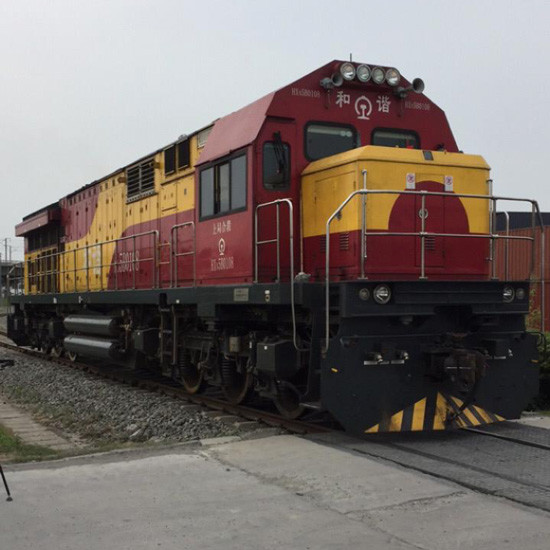
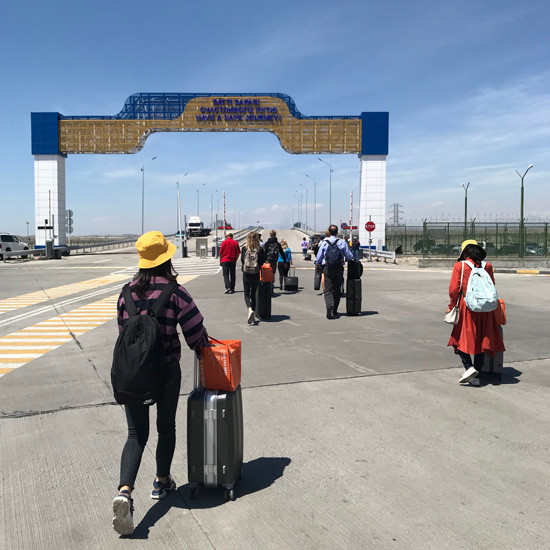
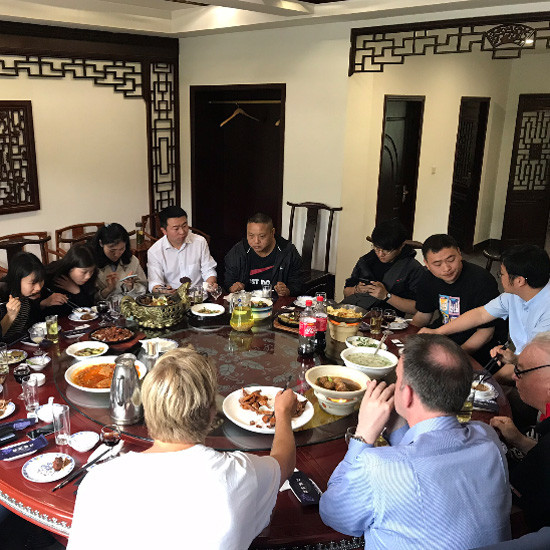
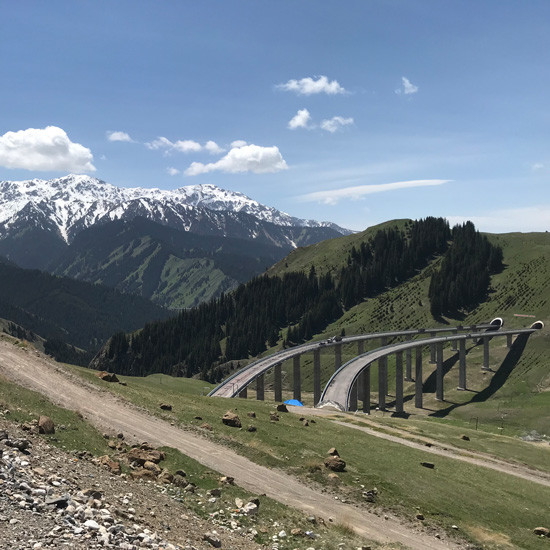
Europe and China to become closer
The international university project has launched an in-depth intercultural dialogue. ‘The teams worked very well together, and we are still in contact with the Chinese students,’ say the two students from Osnabrück University. Both are very impressed by the logistics hotspots that they visited – the hubs for switching between railway gauges at the border between Poland and Russia and the vast port of Shanghai. They have made a film to remember the experience. ‘I would definitely like to go to China again and get to know it better,’ says Christian Greiten.
Professor Schüller can imagine doing a similar travel project again in a few years. He is also working on another idea. ‘My vision is to link up a network of universities along the Silk Road, such as between Osnabrück, Moscow and Almaty, in order to develop a master’s course for an intercultural degree.’ Ultimately, he believes that it is important that Europe and China become closer not only with the rail link, but also culturally. This is where the logistics business comes full circle. Matthias Magnor from Hellmann sees the Silk Road as much more than just opportunities with China: ‘Asia is much bigger than that, after all, and it offers enormous potential. Trade is by no means just about the economic dimension – it brings people together in the end, too.’

